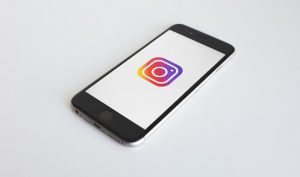What’s the best time to post on social media?
A subject widely researched and debated in the digital marketing space – what is the best day, hour or even minute to post on social media?
Improvements to social analytics and a greater awareness of understanding consumer behaviour, means there are now a range of insights which can help you understand what time you should be hitting that publish button on your latest tweet or Instagram post.
This blog will take a look at how your business can use analytics and performance to help gain valuable insights into the best time to post on your social media channels.
Research and data analysis
There is plenty of research and data out there which suggests that the best day to post on Facebook is Wednesday and you’ll want to tweet at 9am. This data analysis, which can often be found for different sectors and industries, can be an interesting insight into how social media is consumed on a global scale.
By having a look at when most people are scrolling through Facebook or heading over to Twitter, you can begin to understand what days and times people are generally most active on social media.
For example, a business whose target audience was new parents, revealed that by switching their social ads to run throughout the night, they managed to reach new parents who were scrolling through social media as they looked after their children in the early hours. They were easily able to identify that this was much more effective than trying to reach their target audience during the day.
This demonstrates how important it is to consider your business, your products and your target audience when thinking about the best time to post on social media.
Let’s take a look at each of these in more detail now.
Insights from social analytics
Some social media platforms can show you when your followers are most active on the platform, and if your followers mirror your customer persona, this can be a good indication of when to schedule your posts.
For example, Instagram Analytics shows:
- Follower hours: The average time of day your followers are accessing Instagram
- Follower days: The days of the week your followers are most active on the platform
WordStream has a handy guide to finding audience analytics on Instagram.
Facebook Insights can also show when your page fans are online, displaying a graph with the days and times they are accessing the social platform.
Where this data is perhaps not as easily accessible in the social platforms themselves, there are other online platforms and tools that can offer similar insights. One example is Followerwonk, which can provide either an analysis of a brand’s followers or people they follow, including their most active hours. You can connect one social profile for free or pay a monthly cost for higher access levels.

Metrics for engagement
As you begin to build your social profiles and you post more often, you’ll be able to analyse the performance of your activity and notice any trends in peaks and troughs of engagement.
Most social platforms will allow you to see your top posts or compare reach and engagement metrics across your social posts for the week or month. If you’re posting organically across social, keep an eye out for any spikes in engagements and see if there’s a trend to if you’re getting more likes or impressions when you post at a particular time of the day, even if this is morning, afternoon or evening.
![]()
If you go live across social or use story functions, you can compare engagement such as the number of people who watched your live content or viewed your stories if you’re active at different times of the day. While the content you’re sharing or the topic of your live stream will have an impact on engagement, this can be a good indication of what times your followers are likely to interact with your brand.
Some of the metrics you might like to keep an eye on include:
- Impressions (differs between social platforms, but measures the number of times a post is shown or how many times someone sees a post)
- Interactions on stories
- Likes, comments and shares
Audience behaviour and insights
This brings us back to the earlier example of targeting new parents in the middle of the night compared to the middle of the day. As you learn more about your target audience, you can begin to understand when they might be accessing social media and what they might be looking for at that time.
For instance, if your business is B2B and you’re looking to share your latest blog on a new industry development, is your target audience accessing LinkedIn or Twitter in the morning to catch up on the latest news before they start work?
Or perhaps, a fashion B2C business might think about posting their latest product launch to coincide with payday in an evening when their target audience is more likely to be browsing.
Any audience analysis you do for your business to launch a new project or perhaps as part of a larger marketing campaign can feed into this. If you’re developing customer personas, don’t forget to think about their social media behaviour and habits too.
Social scheduling
While we’ve focused on time of day and days of the week in a lot of these examples, a broader understanding of your target audience’s behaviour on social can help feed into wider campaigns too. Like in the fashion example above, does payday have an impact on how receptive people are to your social campaigns? Do other factors like Christmas planning or school holidays impact your customers too?
Online social media scheduling tools can be helpful when looking at your social media performance and for scheduling social posts for times when you might not necessary be online or available to post. These management tools can be a good place to start.
The answer to when the best time is to post on social media really does depend on your business and your customers. There’s no one-size-fits-all solution, but rather a collection of insights from your current performance, research and your customers.
Originally posted by Zoe Brown on the UK Domain.
© Nominet UK 2024


